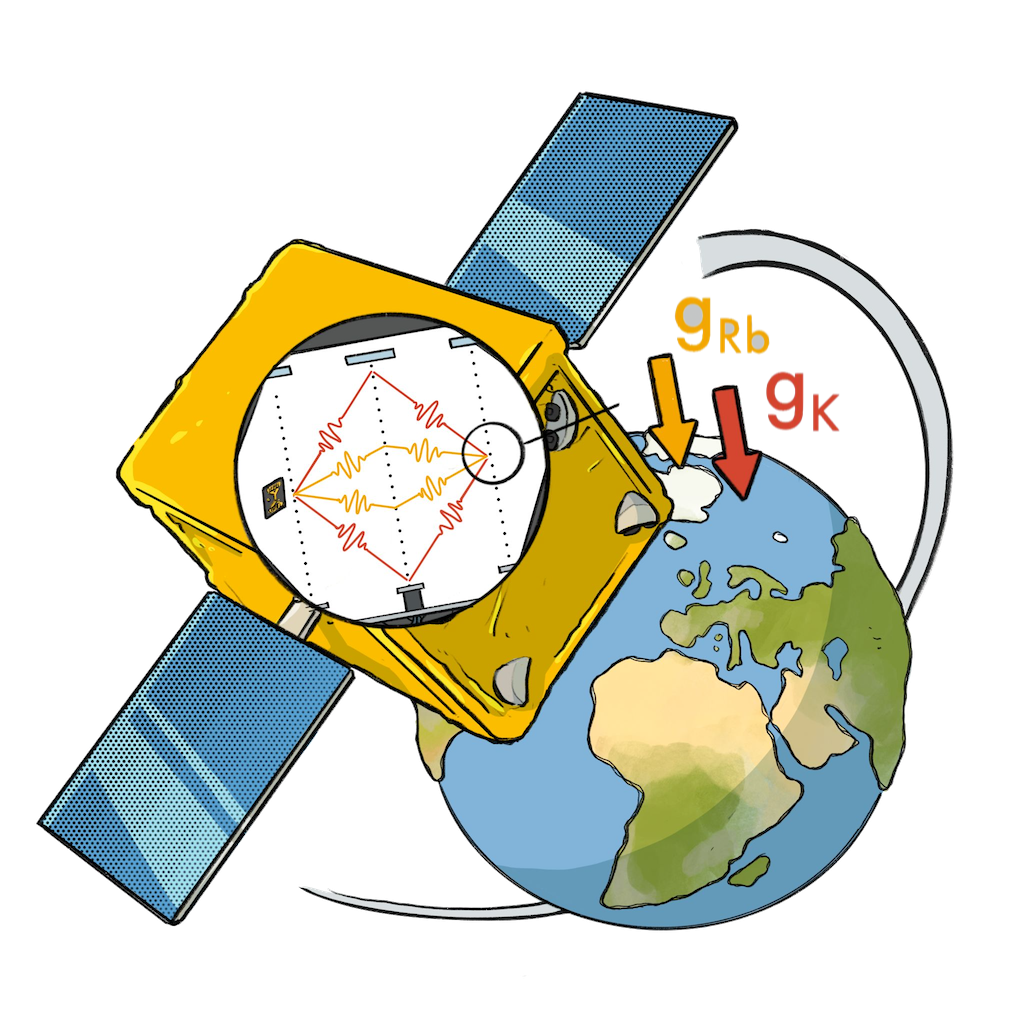STE-QUEST will address some of the most fundamental and puzzling questions of physics as we know it today, making use of advanced quantum sensors for ultimate precision. Thereby it will not only lead to unprecedented advances in science at the interface between general relativity and quantum mechanics, but also pave the way for the use of quantum technologies in space, be it in fundamental physics or Earth observation, time-keeping and navigation. As such, it is an integral part of the recent community roadmap for cold atoms in space, authored by over 200 scientists worldwide 1
The main science objective of STE-QUEST is a test of the equivalence principle using ultra cold atoms in quantum superposition states with a sensitivity about three orders of magnitude beyond the best existing result obtained by the MICROSCOPE space mission in 2017 2. Additional science objectives are searches for different types of dark matter and tests of the foundations of quantum mechanics. Thus STE-QUEST has the potential to revolutionize our understanding of physics and the Universe, or, equally important, to advance significantly our knowledge about the validity of our best current theories and models at the most fundamental level.
STE-QUEST was initially a cosmic vision M3 candidate, which was pre-selected with three other missions and underwent an assessment study in 2011-2013. It was re-proposed for M4, but was not considered to meet the stringent ESA cost target of 450 Me for M4 (ESA-CaC evaluated in the ESA debriefing to be 518 Me), compounded by risks associated with the payload TRL. Since then significant progress has been made on the payload TRL on ground and in microgravity (drop-tower 3, 0-g flights 4, sounding rockets 5) as well as on the control of the main systematic effects 6. This allows us to propose a new version, which concentrates on the core science objectives with enhanced performance by de-scoping payloads related to secondary objectives like the microwave link (MWL) and ground segment, and optimizing the orbit for the primary objectives (SSO circular orbit @ 710 km) leading to further cost savings (e.g., using a Vega launcher instead of Soyuz).
STE-QUEST will put ESA at the forefront of fundamental physics in space, opening the way for unprece- dented discoveries at the frontiers of general relativity and quantum mechanics, and firmly establishing Europe as the leader of the quantum revolution in space.
Footnotes
- I. Alonso et al., Cold Atoms in Space: Community Workshop Summary and Proposed Road-Map, 1, 2022, 2201.07789
- P. Touboul et al., MICROSCOPE Mission: First Results of a Space Test of the Equivalence Principle, Phys. Rev. Lett. 119 (2017) 231101, [1712.01176].
- H. Mu ̈ntinga, H. Ahlers, M. Krutzik et al., Interferometry with bose-einstein condensates in microgravity, Phys. Rev. Lett. 110 (Feb, 2013) 093602.
- R. Nyman et al., I.C.E.: a transportable atomic inertial sensor for test in microgravity, Appl. Phys. B 84 (2006) 673–681.
- M. D. Lachmann, H. Ahlers, D. Becker et al., Ultracold atom interferometry in space, Nature Communications 12 (Feb, 2021) 1317.
- S. Loriani, C. Schubert, D. Schlippert et al., Resolution of the colocation problem in satellite quantum tests of the universality of free fall,]Phys. Rev. D 102 (Dec, 2020) 124043.
